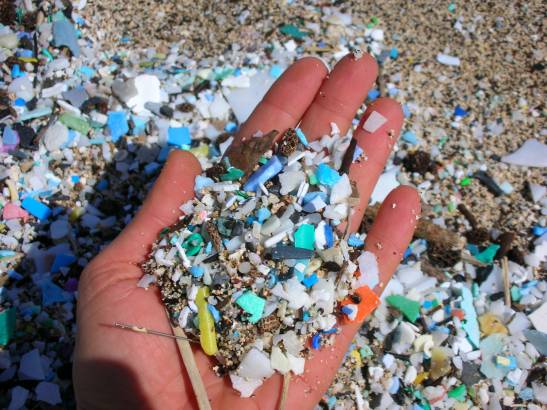The presence of microplastics in the marine environment is a serious problem for the environment. While there is still a lack of research to fully understand the implications it can have for human health, the truth is that we continue to eat, drink and breathe our plastic waste.
Understanding the accumulation of this material in the oceans can provide a critical baseline to help address this form of pollution.
Previous studies have focused mainly on the oceans of the northern hemisphere, close to the world’s most industrialized nations, while others have focused on this problem over short periods of time.
Now, international research has assembled a global dataset on plastic pollution in the oceans between 1979 and 2019, revealing an unprecedented rapid increase in plastic pollution since 2005. The work, published in the journal PLOS ONE, is led by Marcus Eriksen of The 5 Gyres Institute (USA).
We were able to collect data – some published, some unpublished – from around the world to reconstruct a time trend.
Lisa Erdle
To carry out the research, data on plastic pollution since the late 1970s was analyzed, coming from 11,777 stations in six marine regions: North Atlantic, South Atlantic, North Pacific, South Pacific, Indian and Mediterranean.
“Many expeditions and researchers participated in the process. At first, scientists were studying other topics, such as plankton in the oceans, and they ended up collecting plastic samples,” said Lisa Erdle, Director of Science and Innovation at The 5 Gyres and co-author of the study.
“We were able to collect data – some published, some unpublished – from around the world to reconstruct a time trend. This is a collaborative effort among many scientists, which is exciting,” he adds.
Reasons to grow since 2005
After considering aspects such as wind, site selection and biases due to insufficient sampling, the model used showed a significant and accelerated increase since 2005 in the abundance and distribution of plastics in the surface layer of the ocean.
It is estimated that between 82 and 358 trillion plastic particles floated into the oceans in 2019, which would leave an average of 171 trillion plastic particles, mostly microplastics. These would weigh between 1.1 and 4.9 million tonnes (2.3 million tonnes on average).
Regarding the increase since 2005, it should be taken into account that the relative lack of data between 1979 and 1990 prevented the analysis of trends in this interval, while from 1990 to 2005 the levels of plastics showed fluctuations without a clear trend.
There has also been a fragmentation of existing plastic in the environment and poor waste management around the world.
Lisa Erdle
The study authors acknowledge that the results would be biased towards trends in the North Pacific and North Atlantic, as most of the data was collected in these regions. However, they suggest that from 2005 onwards, the large growth in plastic production or the changes in waste generation and management are clearly reflected.
“Several factors likely contributed to this trend, including the rapid increase in plastics production. There has also been a fragmentation of existing plastic in the environment and poor waste management around the world. It is clear that interventions are needed to reverse this trend.” , adds the study co-author.
Agile and global performance
Without widespread changes, researchers believe that the rate of plastics entering our waters will grow 2.6 times by 2040. political change”, says Erdle.
“Generally, there can be barriers to committing to bold international agreements, but plastics is clearly a global problem and will require a global solution.”
There may be barriers to committing to bold international deals, but plastics are clearly a global problem and will require a global solution.
Lisa Erdle
For his part, Eriksen, co-founder and researcher at The 5 Gyres Institute, calls for a United Nations Global Treaty on plastic pollution that is “legally binding to stop the problem at its source.”
In this sense, The 5 Gyres Director of Science and Innovation recalls that, although there is still much to be investigated, enough is already known for leaders around the world to start applying measures and manage to identify “prior interventions that prevent the plastics reach the environment.
Reference:
Eriksen M, et al. “A growing plastic smog, now estimated at over 170 trillion plastic particles floating in the world’s oceans – urgent solutions needed.” PLOS ONE
